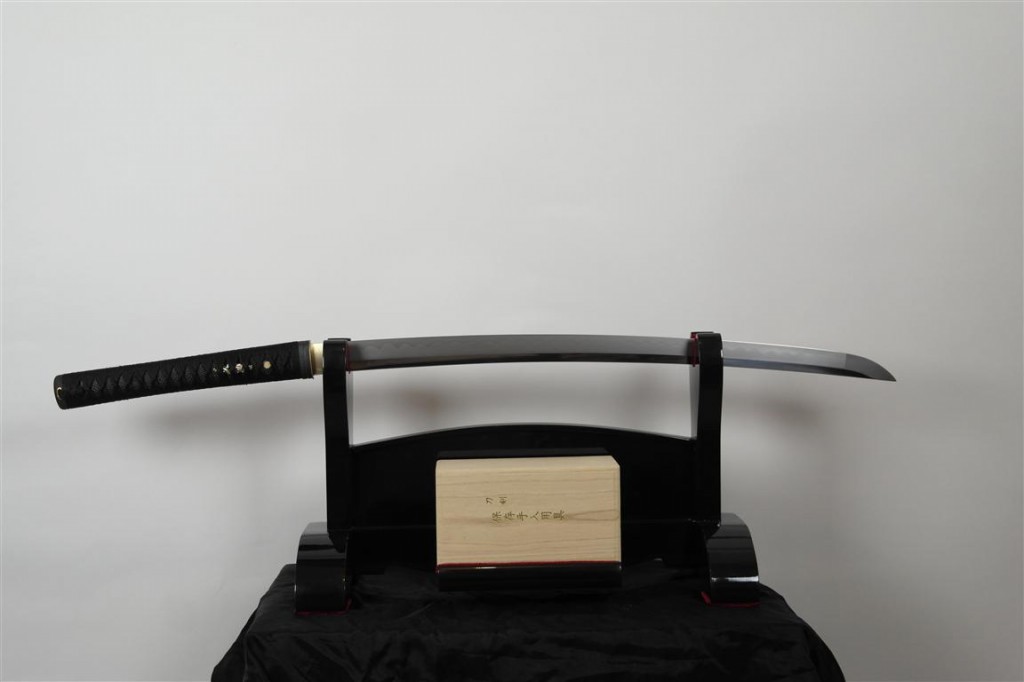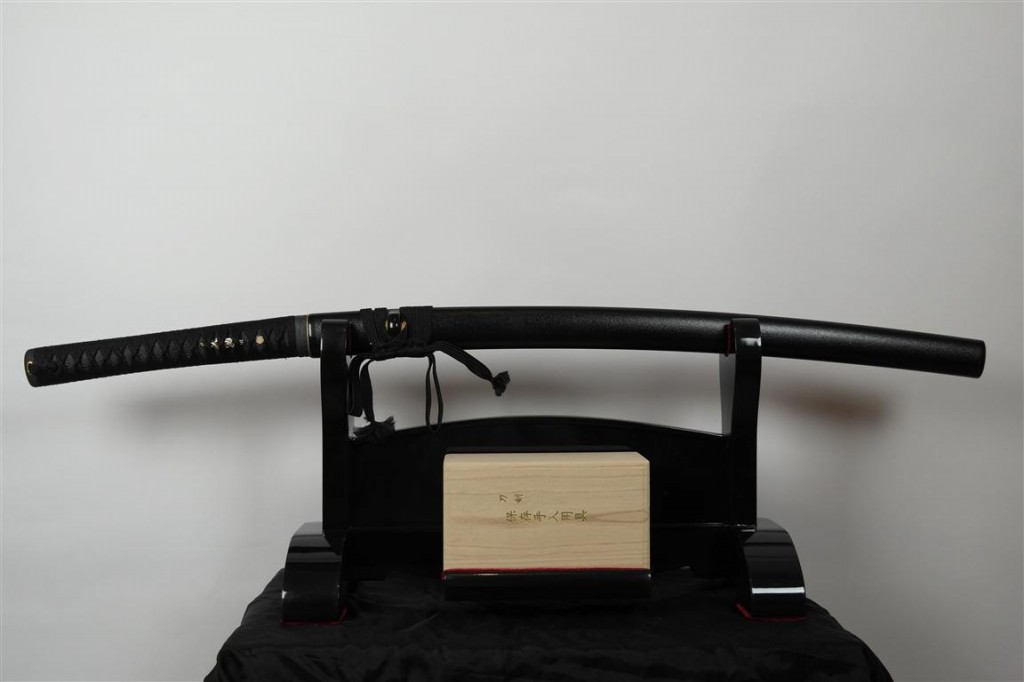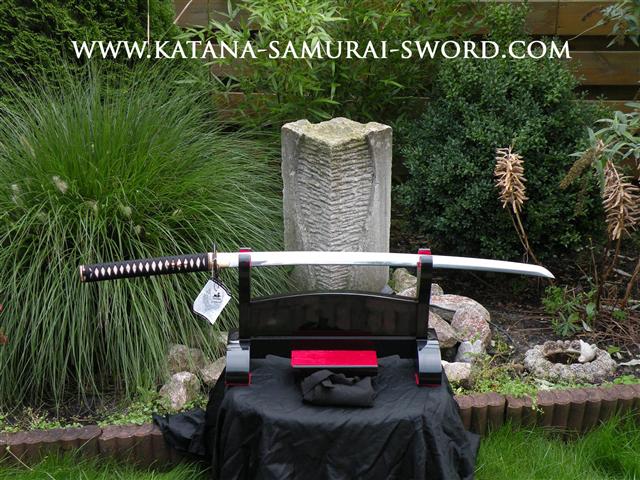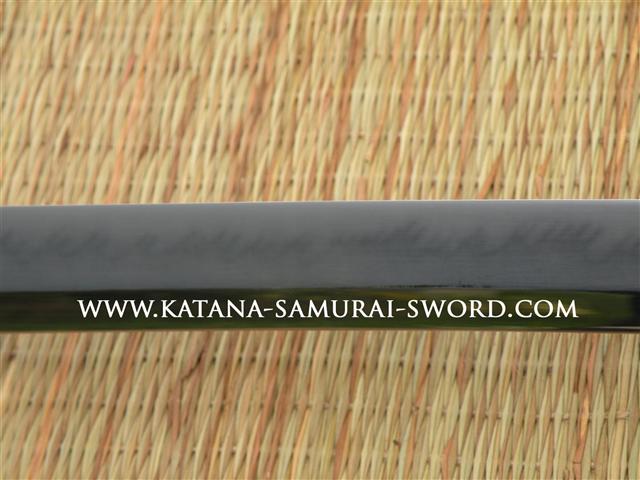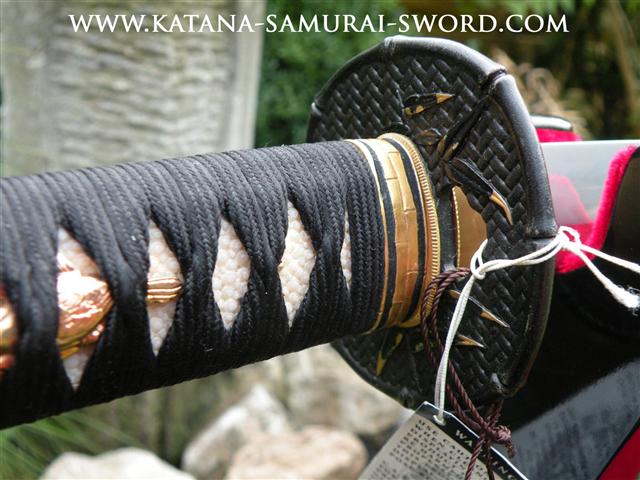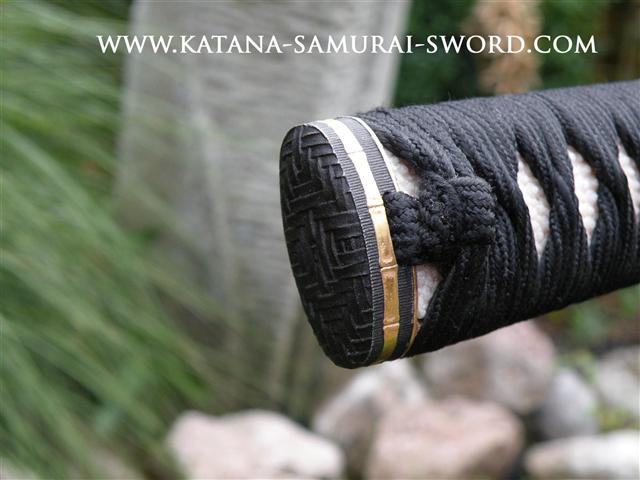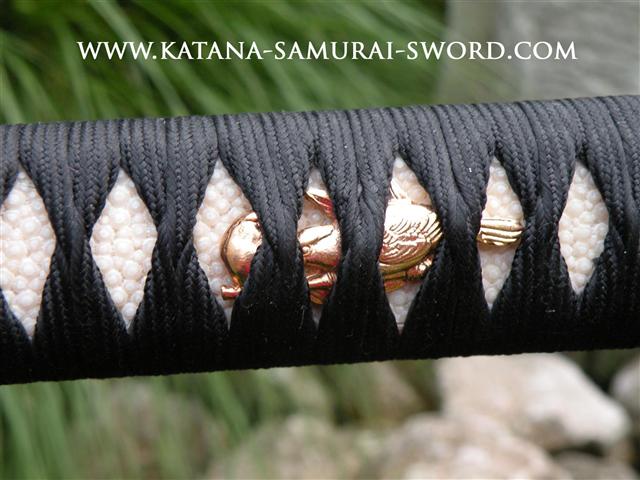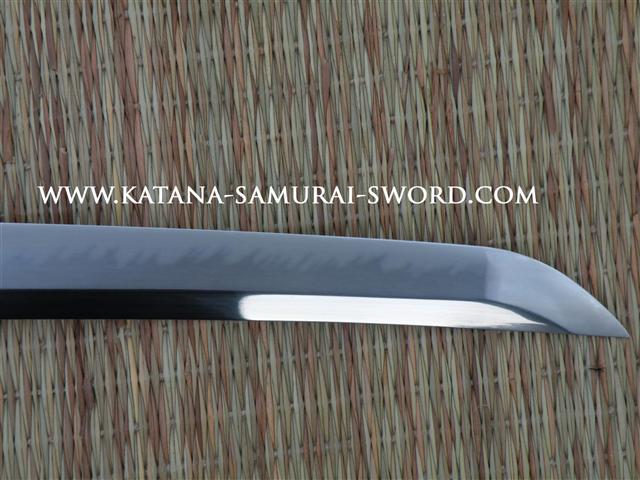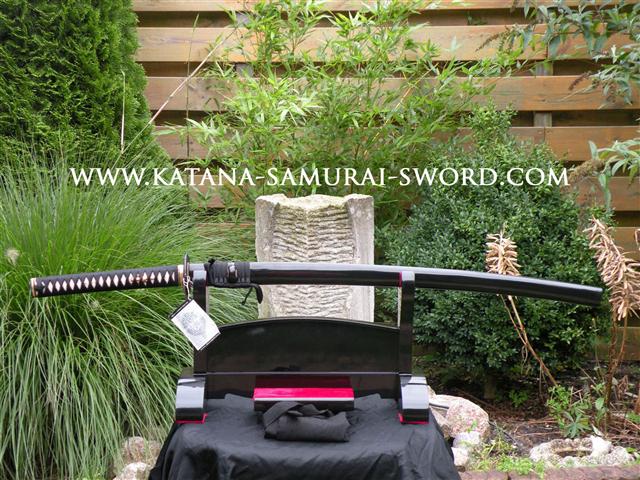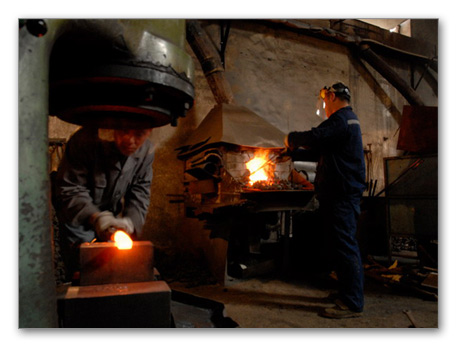I have received new samurai swords from Huanuo but I want to show you some more of the Tamahagane Katana’s from the Huanuo forge.
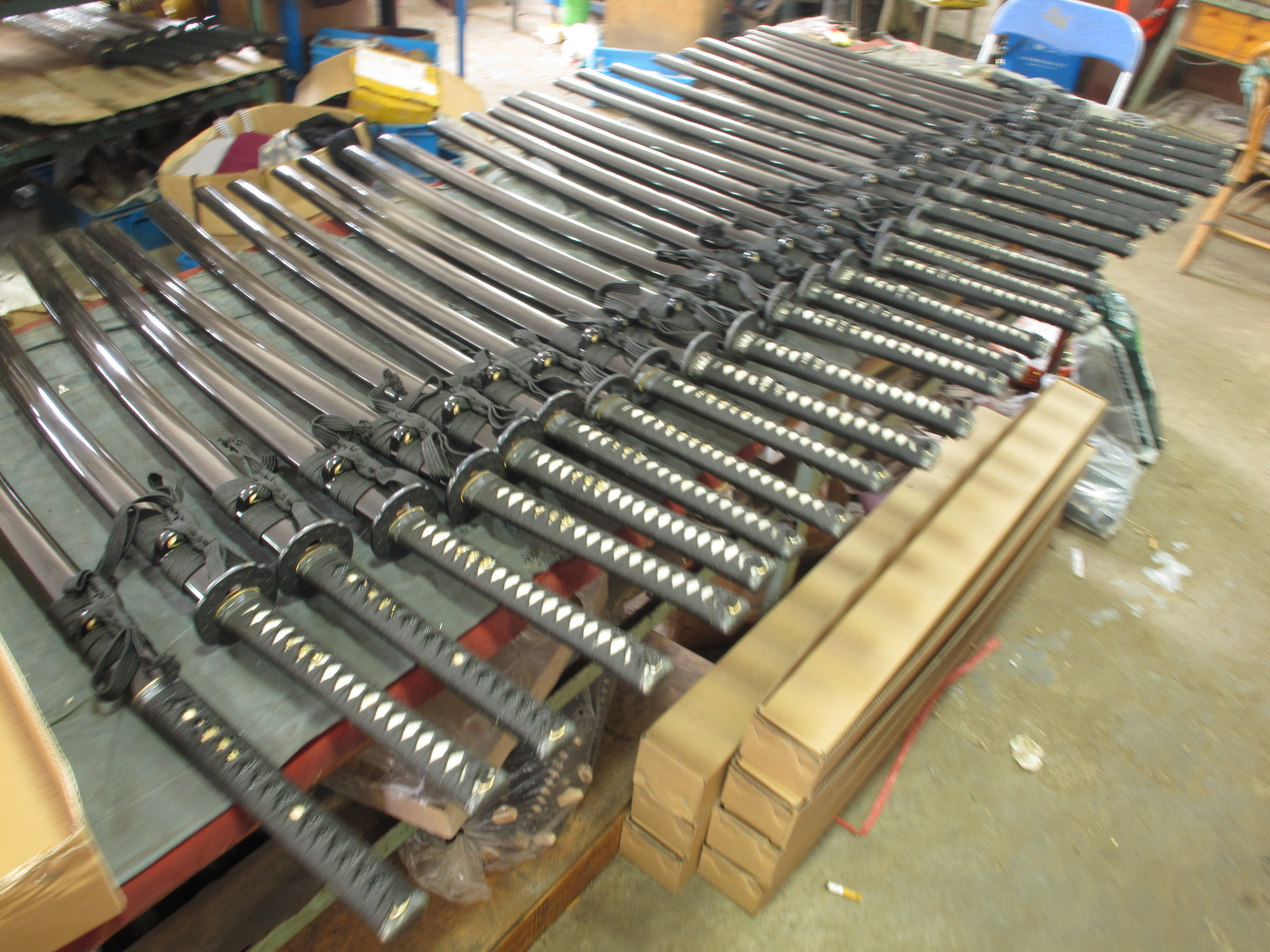
So here we go with reviewing a Huanuo Tamahagane katana. Because now Huanuo Forge is directly selling to me for the World Wide and European Market without any chains I can offer an excellent functional sword for an outrageous price.
After long talking and discussion with Mr Fred Chen I am really into their production process and can proudly show you their new pieces.
Their Tamahagane Katana’s are forged, folded and claytempered with a superb Hamon. The raw materials are all made in china and this Tamahagane sword is a product of small quantity. The Tamahagane katana’s from Huanuo are not made in big amounts but small scaled with eye for details. Other series like the HRC 1060 are more common and are more produced, also those swords are made with carefulness. Tamahagane katana’s from Huanuo Sword Arts are made with a Chinese tatara, a clay furnace with chargoal and bellow controlled. The iron sand they use for Tamahagane is Chinese sourced and after this process is finished the Huanuo smiths will use this Chinese Tamahagane to forge the katana’s. At Huanuo Forge they will sort the different low and high carbon pieces. The smith will forge, fold and combines high and low carbon pieces during sword forging. Like a traditional Samurai Sword this will result in a blade with a low carbon core and high carbon skin. This will cause a blade with a real hard edge and a tough body. All the blades are traditional clay tempered and the created Hamon is appearing due to the hand polishing with imported Japanese stones. The blade geometric is refined and each blade is traditional final polished with a 60 hours taking process. This process is unique in china and most forges sell only machine polished blades. This will result in a natural and unqiue hamon, without any acid enhancement. The hada is really nice and organic.
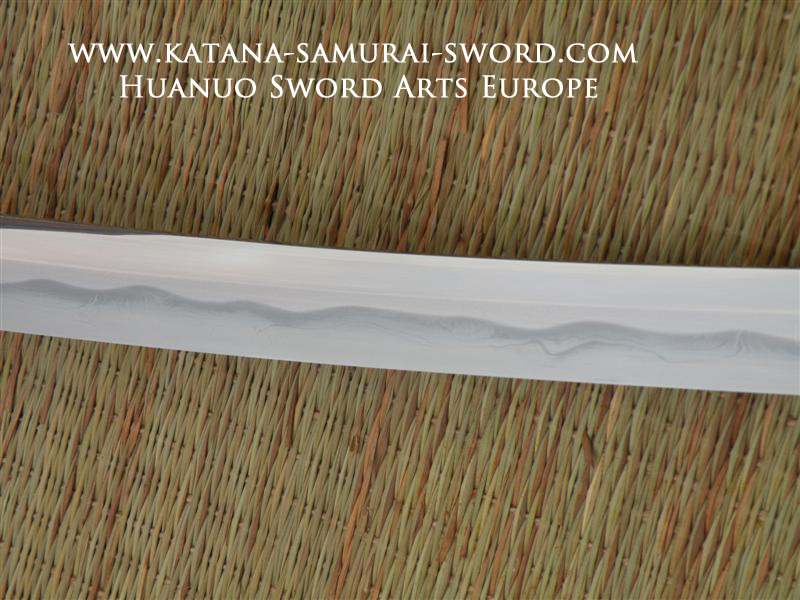
Because I am in this business for a long time, I know the points of attention which are really important for making an excellent production katana.
The tsuka must be really okay, so not teared or broken wood, it makes me sad when I discover that on a new first orders from new forges I want to deal with. Those forges I give a second change but after a new discovery I quit with them. This mostly occur because the tsuka is not custom made for the nakago (tang). But Fred already knows this issue with most production swords nowadays. But for Huanuo we will have an special quality controle about this issue. Also there are some improvements with their fittings and the most important thing is the blades are also forged with the proved techniques and the best quality available.
I will now make a visual analysis of Huanuo’s Silver Bamboo Tamahagane Katana. The overall look is very attractive and has excellent geometric characteristics in my opinion. A very important thing is to approach visual the overall sword is and check the geometric characteristics. At first the geometric blade appearance is really good and overwhelming in my opinion.
The Polish is a real piece of art and craftsmanship. It is a very delicate polish with imported stones from Japan. The polisher uses those stones like in the traditional process. Each polisher will use different stones and methods for the final polish. Basicly you can state a traditional polish is a way to look into the steel. The nagasa shows a nice hada so you can see it is folded to get the steel more homogeneous. From what I know and have seen the steel is folded 8 to 12 times, depending how the smith experts eye is reading the steel because raw steel is reacting different to each fold. The folded layers are very good visible in the ji-hada , an area between the Shinogi-Hi and Hamon, of the blade that is not covered by the hamon-line. I think the Shinogi-Ji is not burnished but polished. The Chu-Kissaki is definitely geometric and very nice, a good job has been done. The balance is very well, the piece I checked had a POB of 18 cm. Of course this blade is differential hardened and shows a nice prominent notare hamon together with an excellent sharpness. This Blade does not have a Bo-Hi so this makes the blade very solid and gives less resistance while cutting a target. In my opinion and I can tell you honestly, a lot of samurai swords have been hold in my hands, those pieces are really very well for a reasonable price. Of course the Koshirae has to appeal you but the quality is really exceptional.
Here you can see the awesome geometric Chu-Kissaki.
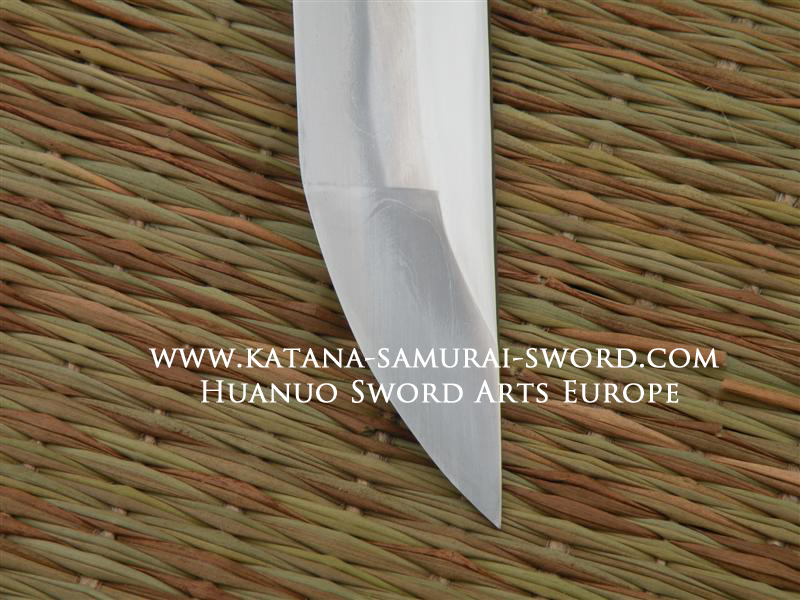
The fittings are solid nickel-silver. It is quite a corrosion resistant material and very durable. All ftttings are mounted very tight and they do not show any backlash. The Habaki perfectly fits the blade and doesn’t show any gap.
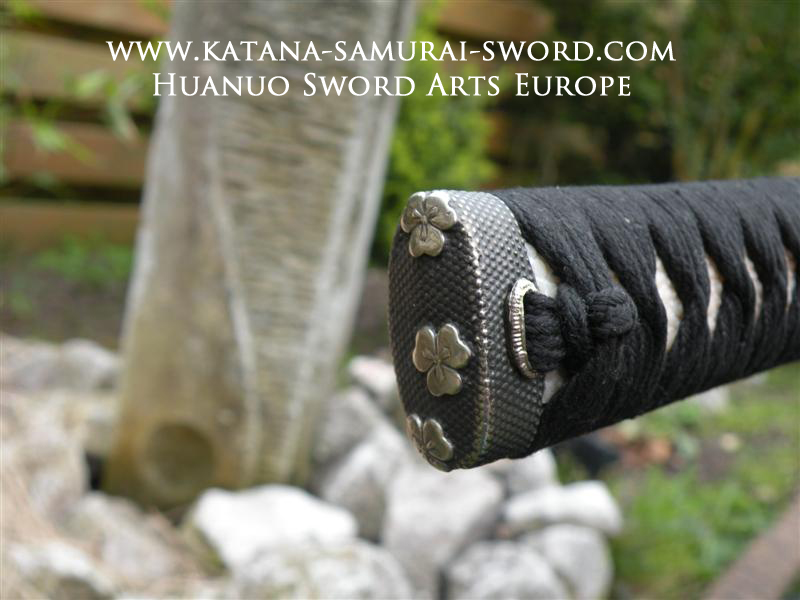
The Tsuba is showing a Bamboo Theme.
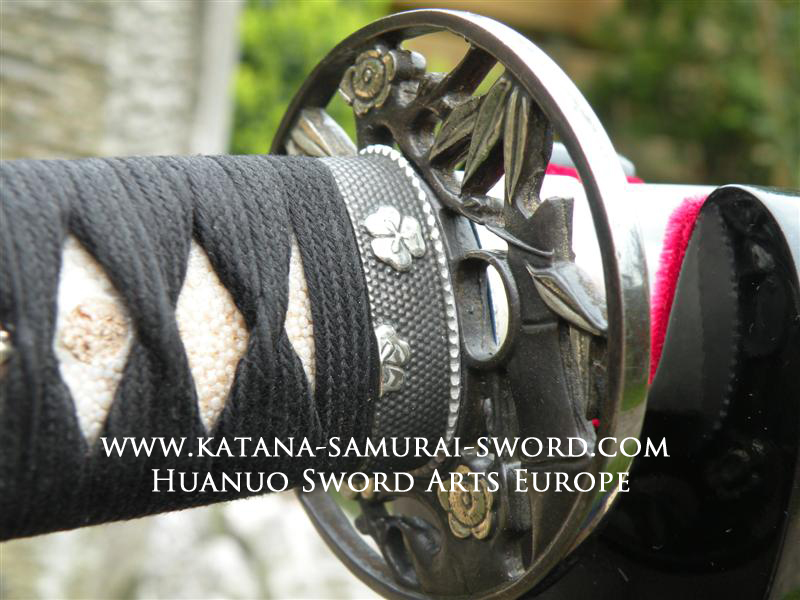
The Menuki is also a Kabuto.
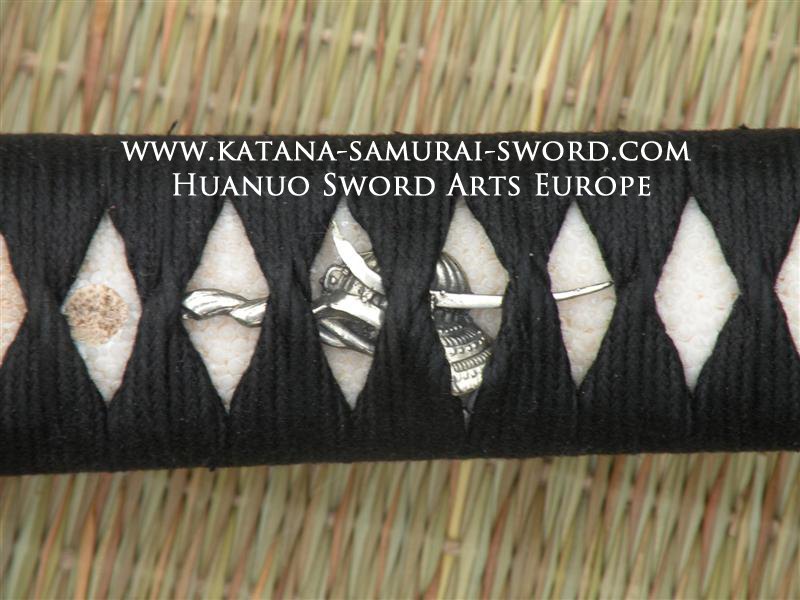
Short Conlusion: An excellent functional and decoration Katana, not Japanese made but really coming close to a real Nihonto (Japanese Sword).
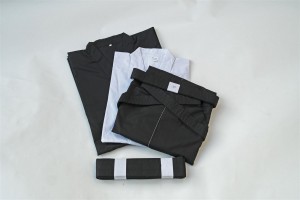


 Samen met Grootmeester Vranken Leonart (9e dan), de oprichter van European V.L. System, en de smederij Huanuo in samenwerking met een Japanse smid een speciaal uitgebalanceerd zwaard gemaakt volgens de wensen van het moderne Hap Ki Do. Zie
Samen met Grootmeester Vranken Leonart (9e dan), de oprichter van European V.L. System, en de smederij Huanuo in samenwerking met een Japanse smid een speciaal uitgebalanceerd zwaard gemaakt volgens de wensen van het moderne Hap Ki Do. Zie 